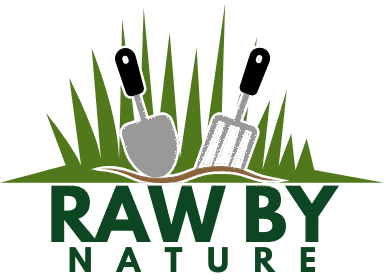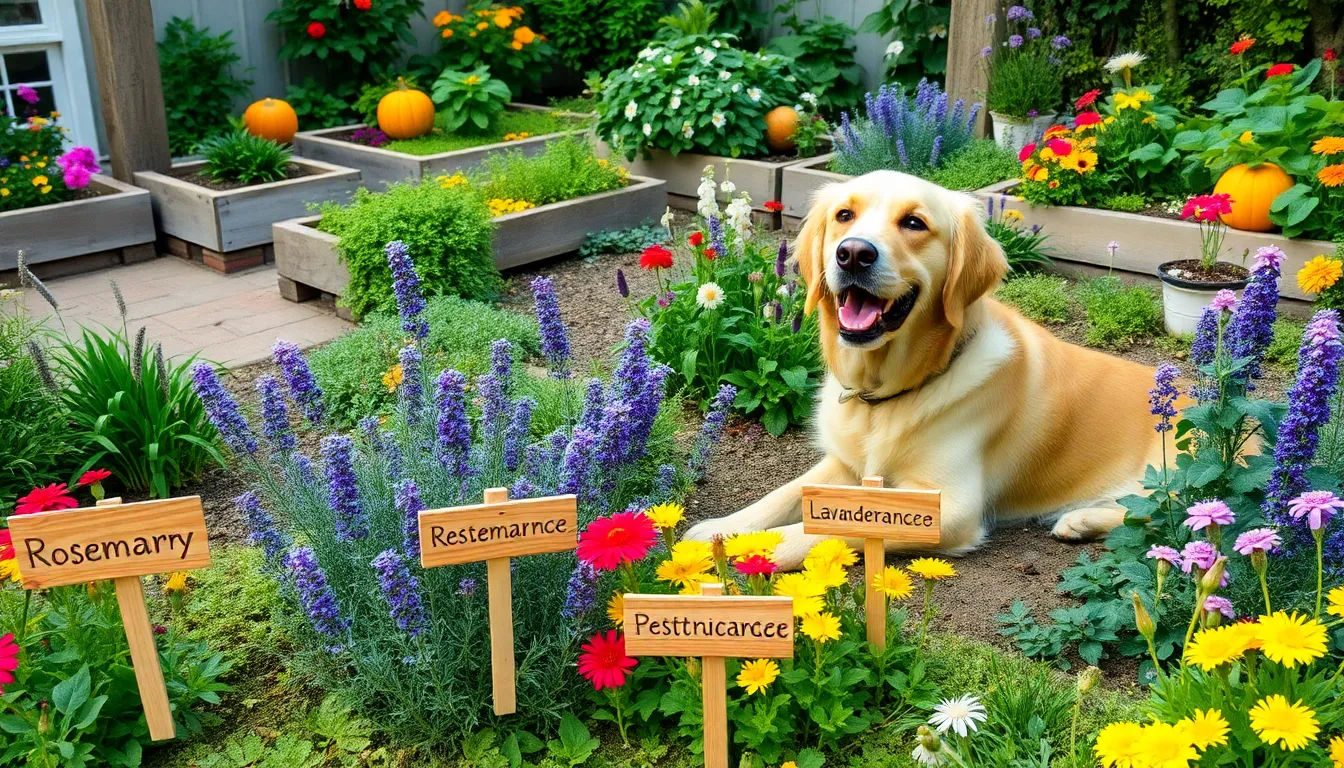Creating a garden that’s as welcoming for your pets as it is for your family can be a delightful endeavor, transforming your outdoor space into a shared sanctuary. Whether you’re nurturing your first pet-friendly garden or refining a well-loved landscape, understanding how to marry beauty with safety is key to a harmonious environment.
For beginner gardeners, the journey to a pet-friendly oasis might seem daunting, but rest assured, it’s a rewarding path filled with small, manageable steps that build confidence. Seasoned gardeners will find that tweaking their existing setups to accommodate furry friends can breathe new life into their gardening pursuits.
In this article, we’ll explore practical strategies to ensure your garden is both a haven and playground for pets, covering everything from choosing non-toxic plants to designing pet-friendly paths. You’ll learn how to balance your garden’s aesthetic appeal with the playful needs of your pets, creating a vibrant space that’s safe and enjoyable for all.
Assess Your Garden’s Safety
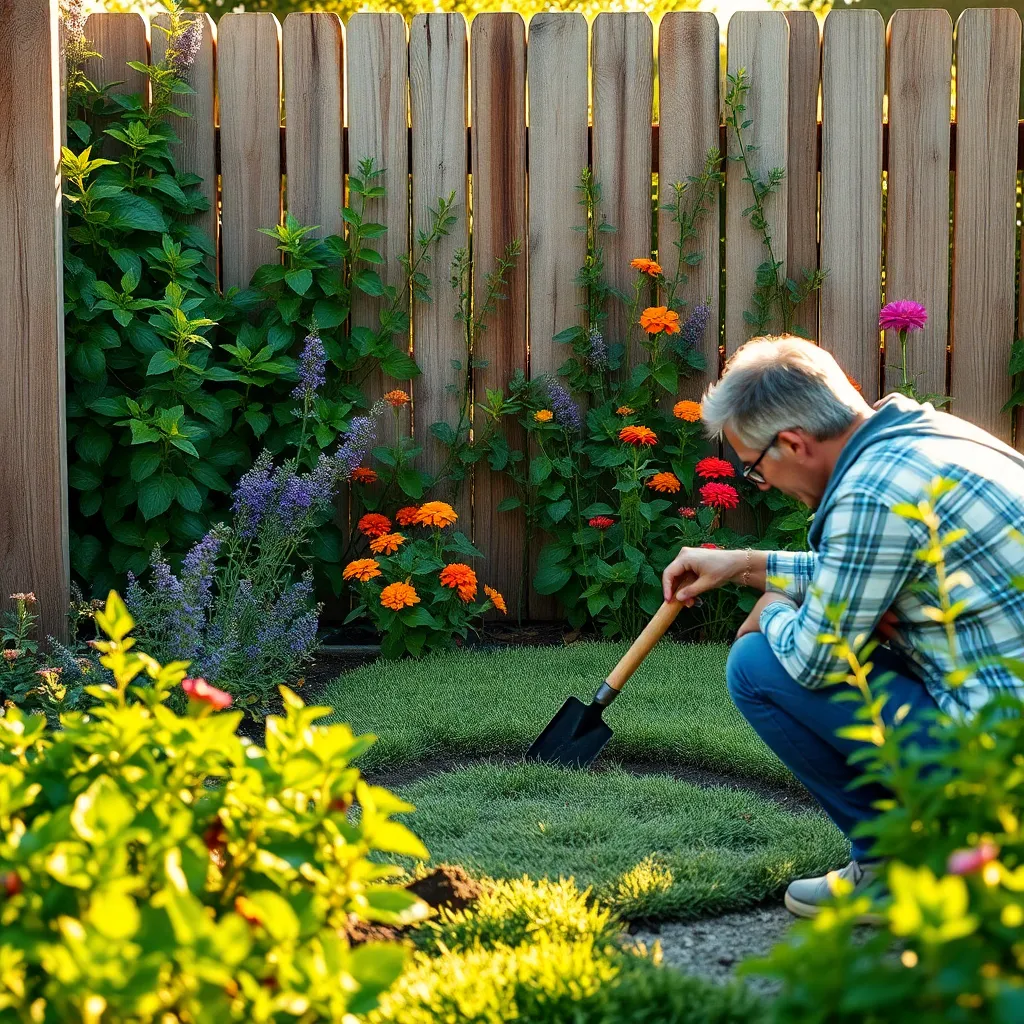
Before making your garden more pet-friendly, it’s crucial to identify any potential hazards that may harm your furry friends. Start by checking for any toxic plants such as lilies, azaleas, or oleander, which can be highly dangerous if ingested by pets.
In addition to plants, assess any sharp tools or equipment that might be left out in the open. Ensure all gardening tools are safely stored away, as curious pets can easily injure themselves on rakes, pruners, or trowels.
Consider the use of fertilizers and pesticides, as these might pose a risk if not used carefully. Opt for pet-safe alternatives like organic compost or neem oil, which are less harmful and still effective for maintaining plant health.
Finally, examine the garden layout for any risky areas such as ponds or steep drops. Installing barriers or using fencing can help create a safe environment where pets can roam freely without the risk of falling or getting trapped.
Select Non-Toxic Plants
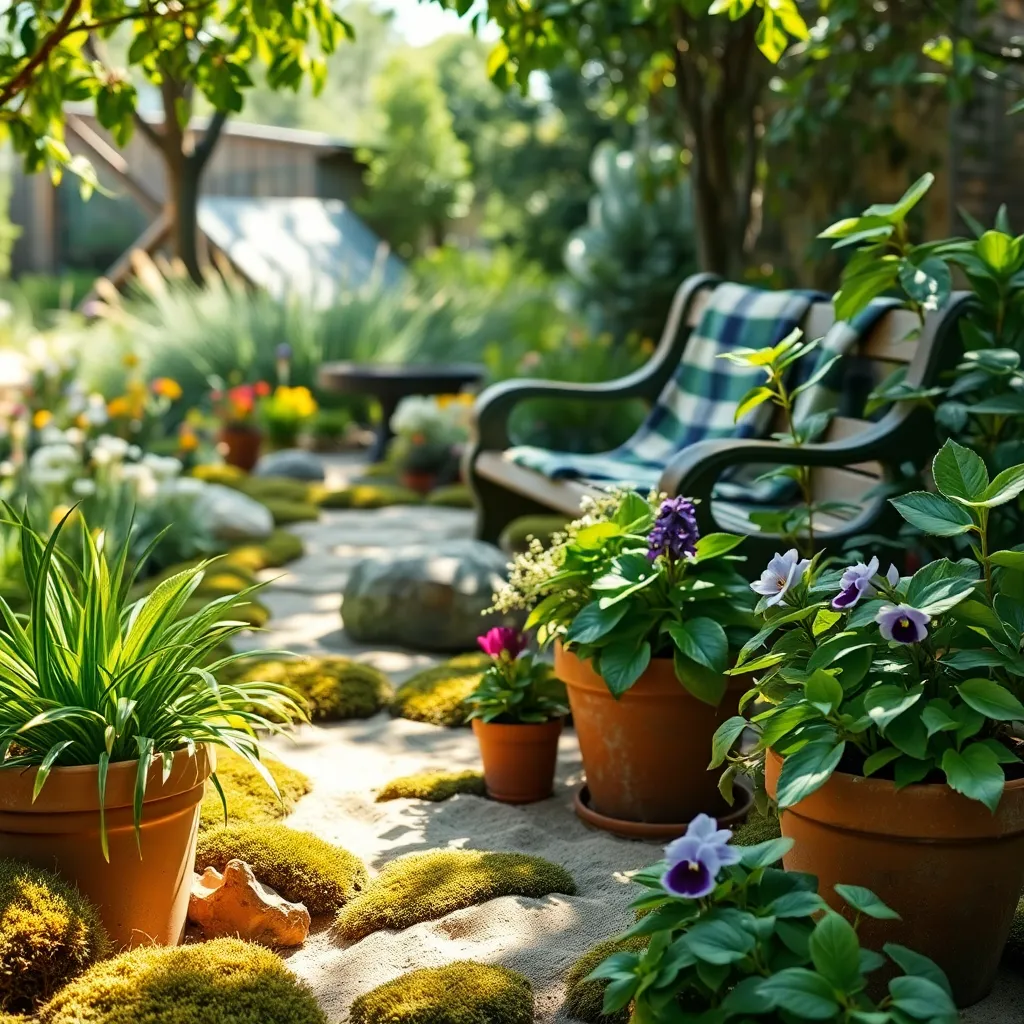
Creating a pet-friendly garden starts with choosing non-toxic plants that are safe for your furry friends. The ASPCA provides a comprehensive list of plants that are non-toxic to cats and dogs, which can be a great resource when planning your garden.
Consider incorporating plants like bamboo, spider plants, and Boston ferns, which are safe for pets and easy to maintain. These plants thrive in various conditions, from bright indirect light to partial shade, making them versatile additions to your garden.
For those with a bit more gardening experience, calathea and areca palms are excellent choices as they add lush greenery without posing a risk to pets. These plants prefer well-draining soil and regular watering, ensuring the soil remains moist but not overly saturated.
Beginners might find success with herbs like rosemary and basil, which are not only non-toxic but also useful in the kitchen. Plant these in a sunny spot with well-draining soil, and water them when the top inch of soil feels dry.
Create Shaded Resting Areas
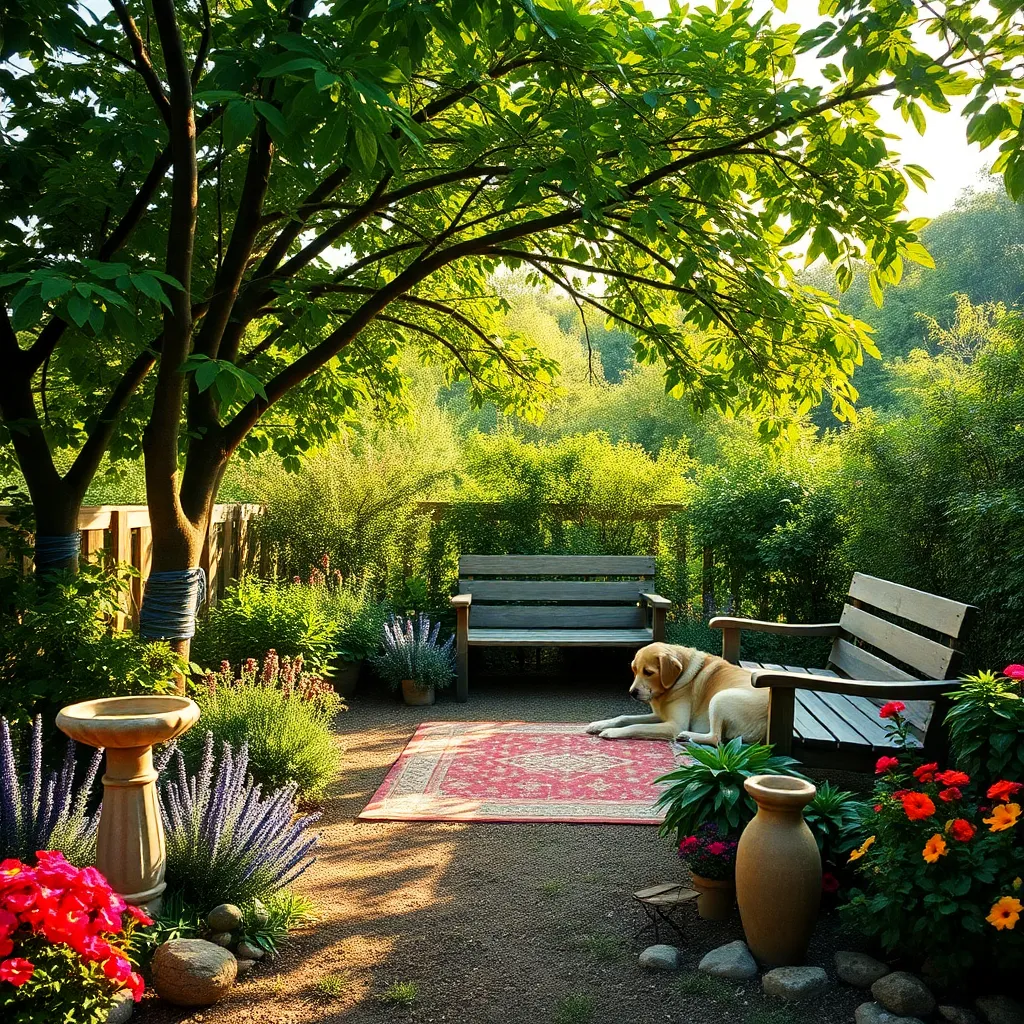
Creating shaded resting areas in your garden is essential for ensuring your pets have a cool place to retreat during hot days. You can use natural elements like trees or trellises covered with climbing plants to provide ample shade.
Consider planting fast-growing trees such as willows or maples, which can quickly develop a canopy. These trees not only provide shade but also enhance the overall aesthetic and ecosystem of your garden.
For smaller spaces, think about installing pergolas draped with vines like wisteria or honeysuckle. These climbers are beautiful and offer a cool, shaded spot for your pets to rest while still allowing some light to filter through.
Regular maintenance is crucial to keep these shaded areas healthy and inviting. Ensure that trees and climbing plants are pruned annually to promote healthy growth and prevent any parts from becoming too dense, which could limit airflow and sunlight.
Install Pet-Friendly Pathways
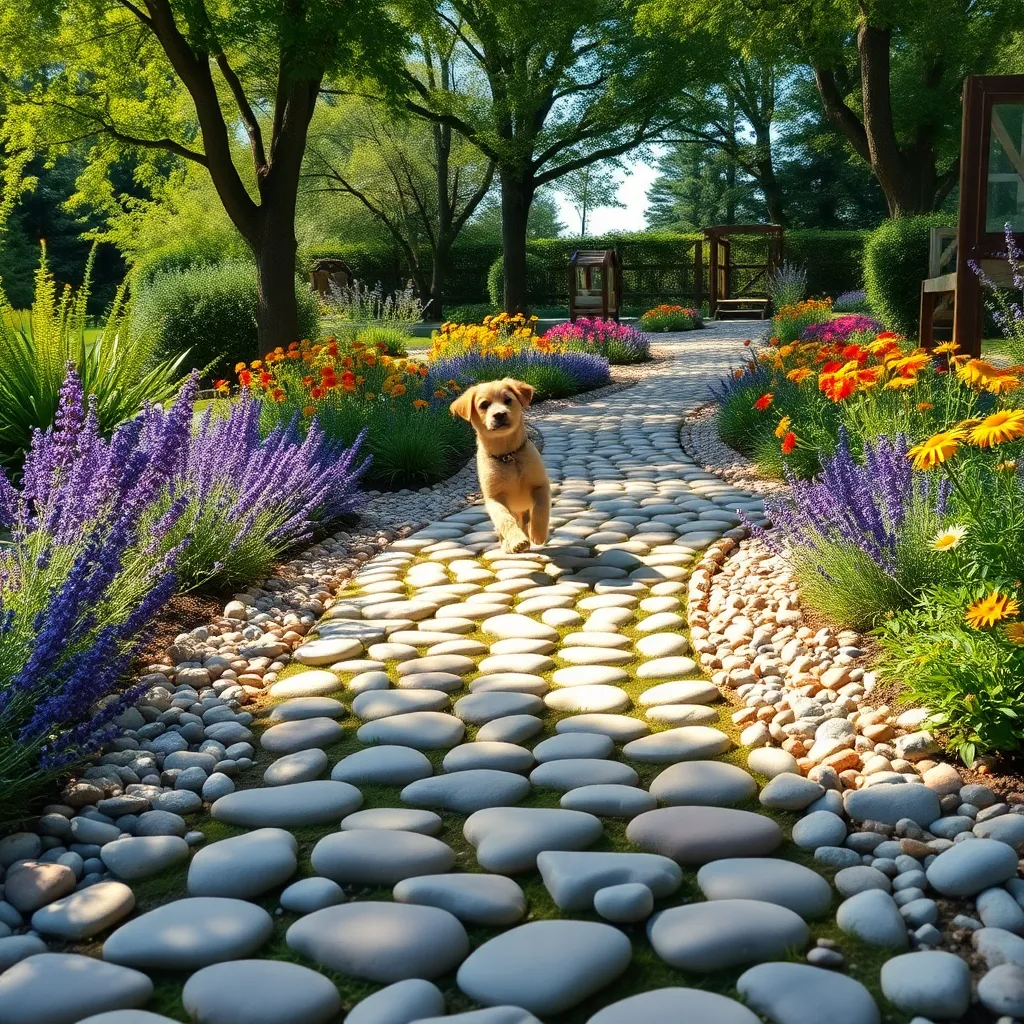
Designing pet-friendly pathways in your garden can help protect both your plants and your furry friends. Choose durable, non-toxic materials like gravel or flagstone to create paths that are safe and comfortable for paws.
Incorporate curves and varied textures to keep your pets engaged and to guide them away from delicate plant beds. **Avoid using sharp-edged stones**, which can hurt your pets’ paws, and opt for rounded, smooth surfaces instead.
For pathways under heavier foot traffic, consider using decomposed granite, which compacts well and provides a stable walking surface. Make sure to lay down a **weed barrier fabric** before adding your pathway materials to prevent unwanted growth and reduce maintenance.
To enhance the pathways further, plant **low-growing, hardy groundcovers** like creeping thyme or Irish moss along the edges. These plants are not only resilient to pet traffic but also add a lush, green border that will thrive with minimal care.
Incorporate Secure Fencing Options
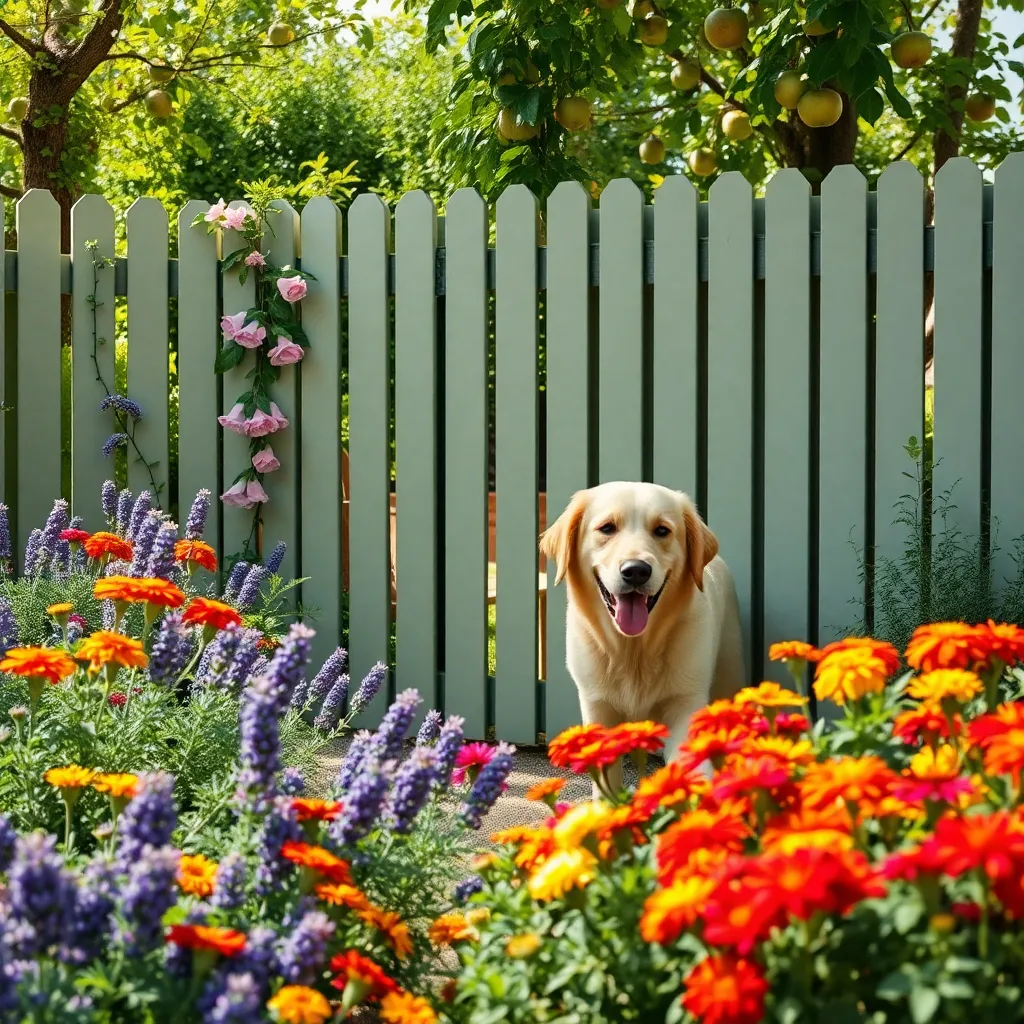
Creating a pet-friendly garden involves not only providing safe pathways but also incorporating secure fencing options. Fencing serves as a boundary to keep your pets safe within your garden, preventing them from wandering off and protecting them from potential dangers outside.
Consider using materials that are sturdy yet safe for pets, such as wooden panels or metal mesh. Ensure that the fence is tall enough to prevent pets from jumping over, with a height of at least 4 to 6 feet being recommended for most dog breeds.
For gardens with digging-prone pets, it’s essential to extend fencing underground. You can achieve this by burying a portion of the fence at least 12 inches deep, or by installing an additional barrier such as chicken wire beneath the soil surface.
To enhance security and aesthetics, you can plant pet-friendly shrubs or hedges along the fence line. Choose non-toxic plants like lavender or rosemary, which not only create a lush boundary but also offer pleasant scents and textures that enrich the sensory experience for your pets.
Conclusion: Growing Success with These Plants
As we’ve explored in making your garden a sanctuary for both pets and humans, it’s clear that nurturing this outdoor space can foster stronger bonds. First, understanding your pet’s needs is key, ensuring their safety and comfort as a priority. Next, incorporating pet-friendly plants and materials prevents hazards, promoting a safe environment. Creating designated play areas not only enriches your pet’s life but also strengthens your connection through shared enjoyment. Adequate shade and water stations demonstrate care, reinforcing your role as a provider. Finally, ongoing maintenance ensures your garden remains a harmonious habitat for all family members.
To start transforming your garden today, consider identifying one small change you can make immediately—perhaps adding a water station or swapping out a few plants. As you take this step, remember that these adjustments are investments in happier, healthier relationships with your pets.
We encourage you to save or bookmark this article as a guide for your journey. By doing so, you’ll have a handy resource to revisit, ensuring your efforts continue to nurture a thriving, pet-friendly garden. Embrace these changes, and look forward to a more connected, joyful relationship with your pets, knowing that every step taken is a step toward enduring success.
